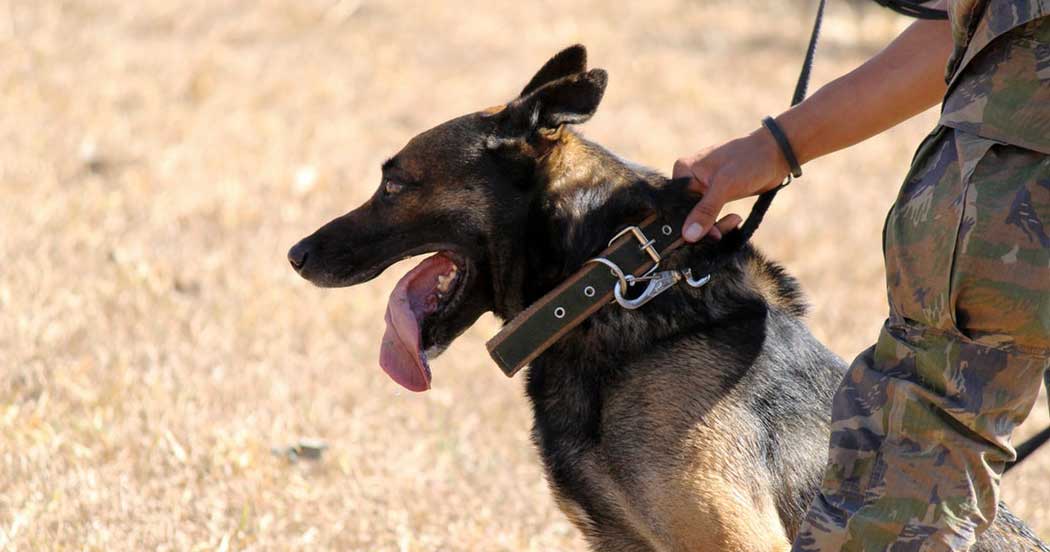Police K9 Training, Advantages, and Pitfalls
Police dogs have become integral to law enforcement and assist in various investigations. They can be effective but make mistakes. It is vital that an experienced defense lawyer protects and defends you.

How Police Dogs Work
Dogs and humans have worked side by side for thousands of years. Modern training methods have capitalized on the special human/canine bond. Dogs have become integral to many people’s lives, not just as companions but also as guide dogs, search and rescue dogs, and bomb and drug-sniffing dogs. Police and military dogs are the animals that are asked to give the most of themselves.
Police in most major cities use police dogs to track criminals, sniff out illegal materials, search buildings, locate lost people and do many other things. These dogs do many things that human police officers cannot do as well as they can.
Dogs have a fantastic sense of smell. Their sense of smell is almost 50 times more sensitive than a human’s. A dog can sniff out people, drugs, weapons, and bombs in situations where a human officer would miss them completely.
In addition to having a keen sense of smell, the dog’s nose is picky. Where we would smell beef stew, a dog would smell carrots, onions, potatoes, and beef. There was an incident where drug smugglers wrapped the drugs in perfume-soaked towels, and the dog found the drugs anyway.
Also, a police dog can serve as a deterrent to physical confrontations between police and criminals. Often, the mere presence of a growling German Shepherd can prevent a criminal suspect from running or fighting.
The Right Dog for the Job
The majority of police dogs are German Shepherds. However, depending on the task, Labrador Retrievers, Bloodhounds, Belgian Malinois, or even Beagles are used. The key attributes of a police dog are intelligence, aggression, strength, and a sense of smell. Most police dogs are unneutered males that maintain their natural aggression. This aggression must be kept in check with thorough and rigorous training.
Police dogs come from various sources. Many police departments import dogs from Europe. These dogs have advantages over American-bred dogs because the breeding standards are stringent. Before the dog came to the United States, it had undergone rigorous training and earned an international certification. The drawback is the cost of shipping the dog to the United States. However, a well-trained dog can pay for itself with its work, especially in drug-sniffing.
Only the most dedicated police officers are considered to be K-9 handlers. This position is for the dog’s working life (often six years). When a dog is retired from police work, it usually stays with its handler’s family.

Police Dog Basic Training
All police dogs must be experts at basic dog obedience. They must obey their handler’s commands without hesitation. This keeps the dog’s inherent aggression in check and allows the officer to control how much force the dog will use against a suspect.
European dogs are given commands in their native language. It is not true that this minimizes the chances of a person accidentally giving the “attack” command. It is easier to teach the officer a few words in the dog’s native language than to retrain the dog in English.
These dogs must make it through endurance and agility training. They must be able to jump walls and climb stairs. The dogs are also trained around noise and distractions. A nervous dog around people will not be a good police dog.
Police Dog Drug Training
Dogs are trained to detect drugs and bombs because they are actually looking for their favorite toy. The handler begins training by playing with the dog and its favorite toy. Over time, the handler adds the scent of drugs to the toy. The dog eventually starts associating the smell with the toy. The handler then hides the toy with drugs. When the dog smells the drugs, he digs and scratches to get the toy. As soon as he learns that if he sniffs out the smell of drugs, he is rewarded by playtime.
The exact process is used for bomb detection. However, bomb dogs are taught to “alert” by sitting. This type of alert is called a passive alert.

Potential Liability of a Police Dog
If a police dog injures someone or causes damage, the police department could be liable for those damages as it would be for a human officer. The same standards are used for dogs and human officers in determining if the use of force is justified. The factors determining justified force are the severity of the crime, whether the suspect is an immediate threat to anyone, and whether the suspect is trying to run away or resist arrest.
The use of police dogs increases as police departments realize that a well-trained dog/handler team reduces liability. A K-9 team can often keep a suspect from resisting and usually end the situation before it escalates to the point that someone might get injured.
Recent United States Supreme Court Cases Regarding Police Dog Searches
Florida v Harris
An officer with a canine partner had stopped a truck for a minor traffic violation and sensed that the driver might be on drugs. Because the truck’s driver refused to let the officer search the truck, the officer led the dog around the vehicle’s exterior. The dog made movements that showed he smelled something suspicious on the driver-side door handle. Taking that as a signal that drugs were inside the truck, the officer checked the interior and found a stash of drug-making equipment.
Ultimately, the individual was convicted, but he still had the opportunity to argue that the officer had no justification for the search because the dog was not a reliable drug detector. The Florida Supreme Court agreed with the challenge and laid down a specific checklist that police must offer to justify a search based on a dog’s “alert.” The Supreme Court said no to the checklist and said there should be a common-sense approach, looking at all the facts and circumstances to see if the dog had been trained to do what the police claimed it could do.

Probable Cause is Sometimes Necessary for a Police Dog Search
Florida v Jardins:
A police dog was brought onto Jardins’ home’s front porch because police suspected there were drugs on the home. The dog “alerted” to the drugs, and police used that to get a search warrant for the home. Drugs were found. Jardins argued that using the dog this way was an illegal search under the 4th Amendment. The Florida Supreme Court said no. The United States Supreme Court overturned Florida’s decision and decided this was a search, and probable cause was needed to get a warrant and NOT just the dog’s sniff.
The Supreme Court specifically said that “[t]he investigation of Jardins’ home was a “search” within the meaning of the Fourth Amendment. At the Fourth Amendment’s “very core” stands a man’s right to retreat into his own home and there be free from unreasonable governmental intrusion.” The area immediately surrounding and associated with the home is considered part of the home for Fourth Amendment purposes. The front porch is an area where the officers’ entry was not explicitly or implicitly invited. A police officer without a warrant may approach a home hoping to speak to its occupants. However, the scope of a license is limited not only to a particular area but also to a specific purpose. There is no customary invitation to enter the home or surrounding areas to conduct a search.
Problems with Dog Searches and Potential Legal Challenges
There have been complaints filed throughout the United States alleging that some dogs are intentionally being trained to operate as so-called trick ponies or dogs that provide officers false alerts for the presence of drugs and might be profiling racial minorities in the process. A survey of primarily suburban police departments in Illinois carried out by the Chicago Tribune found that 56 percent of all police searches triggered by a drug-sniffing dog turned nothing up.
But, perhaps tellingly, that number jumped to 73 percent when the search involved a Latino subject — meaning that nearly three-quarters of all dog alerts on Latinos turned up no contraband. The study covered two years, from 2007 to 2009.
Police spokespeople say the numbers are no surprise because dogs’ noses can sniff the residue of drugs on a person or in a vehicle long after the drugs have been removed.
It has been alleged that these dogs are being trained to alert their handlers by cues instead of sniffing a drug’s scent. When a dog gives a false alert, this results in illegal searches and seizures, including money and property.
Police dogs are not superhuman drug-detecting machines; they give false alerts due to outside stimuli. For example, if you had a cat in your car, the dogs would go crazy. Outside all the environmental stimuli that can cause the dogs to alert falsely, police frequently train them to falsely alert on cue.
Even with the problems the dogs sometimes cause – they are a valuable law enforcement asset.

Michigan Premier Criminal Defense Attorneys Can Help You
Having a criminal defense specialist with you is essential when facing criminal charges. It is crucial with the added factor of a police dog’s involvement in the case. Dogs are heavily relied on by police departments, and it is vital that your legal representation has a background in the intricacies of the law related to dogs’ use. The attorneys with LEWIS & DICKSTEIN, P.L.L.C. have decades of combined legal experience in criminal defense. We have handled numerous cases involving the use of police dogs.
Call us today at (248) 263-6800 for a free consultation or complete an online Request for Assistance Form. We will contact you promptly and find a way to help you.












